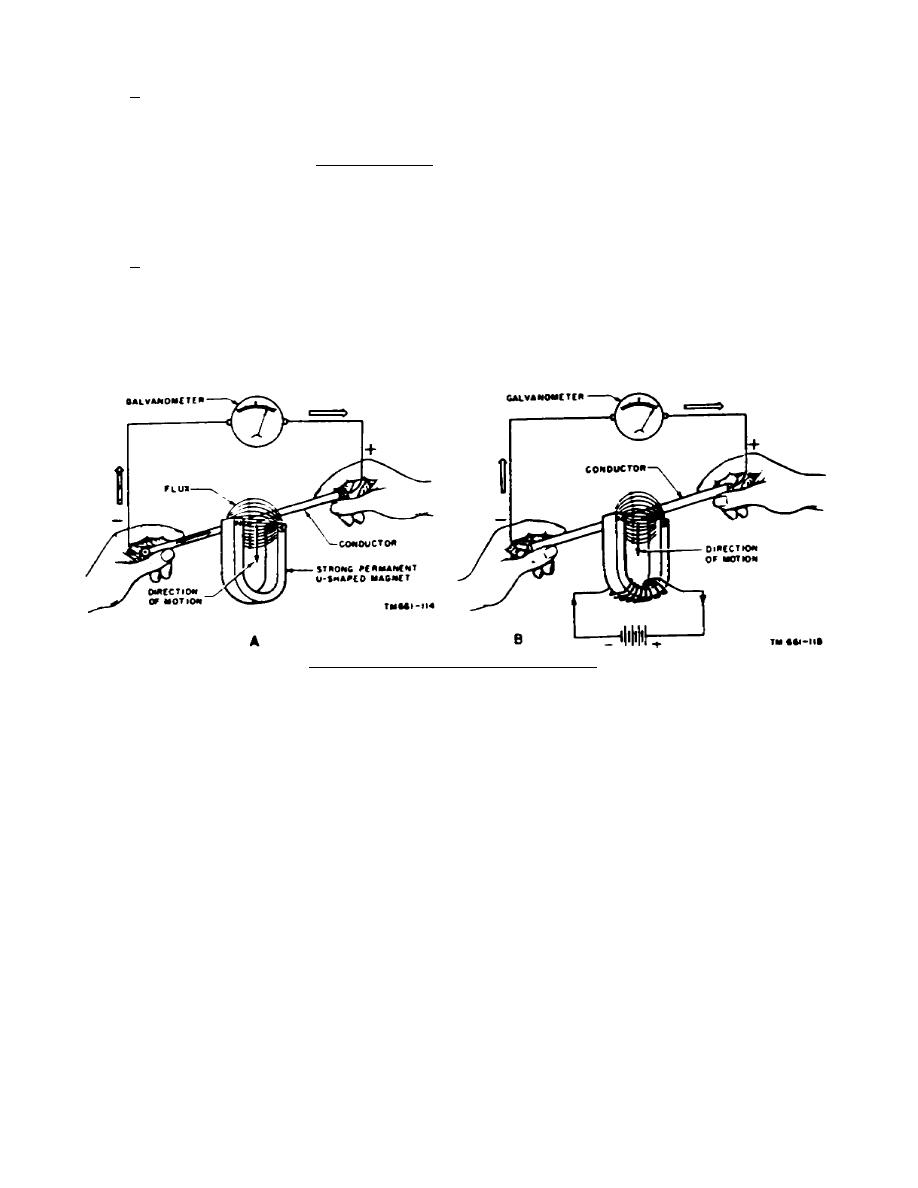
c. Lines of force in the magnetic field of a coil of wire exhibit the same
characteristics as shown by a magnet; that is, N and S magnetic poles develop at
the ends of the coil, and the lines of force form continuous loops through the
coil. A coil of wire having a soft iron core and current flowing through the wire
is therefore called an electromagnet.
Electromagnets form the basis of all
electric motors and generators, doorbells, most types of electrical indicating
instruments, transformers, tuning coils, and many more devices.
11.
ELECTROMAGNETIC INDUCTION
a. Current can be induced to flow in a conductor if the conductor is moved
through a stationary magnetic field or if the field is moved so that the lines of
force cut a stationary conductor.
(1) The wire in A of figure 15 is moved downward through the magnetic field
between the two magnetic poles.
As it moves downward, cutting the
lines of force, current is induced in it.
Figure 15.
Induced current flow.
(2) The direction of current is indicated by the arrows and the movement of
the zero center-scale meter (galvanometer).
When the movement is
reversed, the galvanometer will indicate a current flow in the opposite
direction.
(3) If the wire is held stationary and the magnetic field is moved, the
effect is the same; that is, current will be induced in the wire. All
that is required is that there be relative movement between the two so
that the lines of force are cut by the wire.
(4) By changing the permanent magnet to an electromagnet, as shown in B of
figure 15, it is possible to increase the flux density to develop a
higher induced current in the conductor. Note the increased reading of
the galvanometer. A further advantage is obtained with this
308
18


 Previous Page
Previous Page
